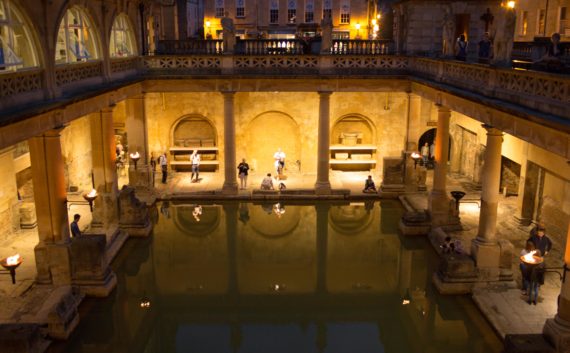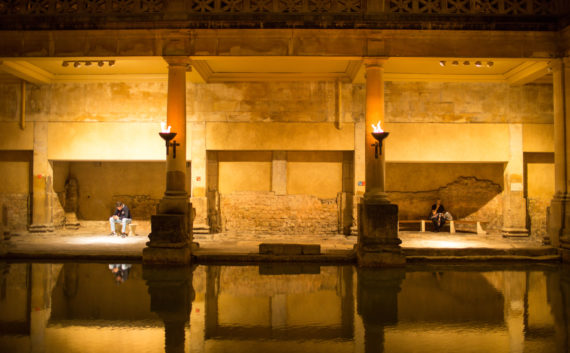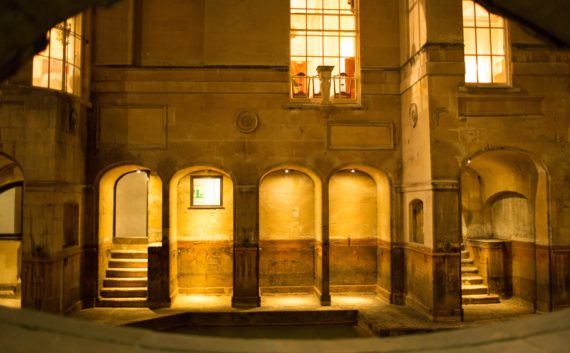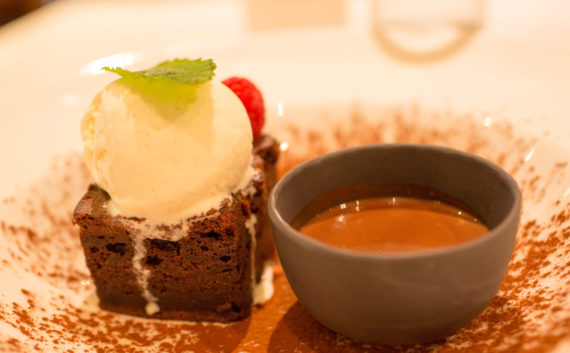Don’t you always find that it’s places fairly close to home that you don’t tend to visit?
Well it seems to happen to me quite often. For example, I had never ever been to Bath before even though it’s only about about two and half hours by car from London (one and a half hours on the train). I was pretty excited to have the opportunity to explore the ancient Roman Baths in Bath, England by torchlight.
I took a four day road trip packed full of epic experiences and unique sights all around the south west of England. I’d been supplied with a lovely red Renault rental from Hertz for my week long road trip and my first stop was Bath, to experience the ancient Roman Baths by torch light.
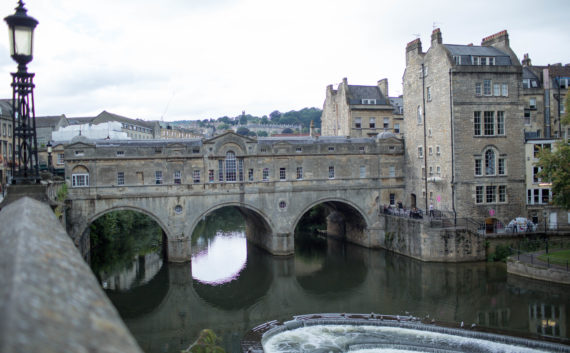
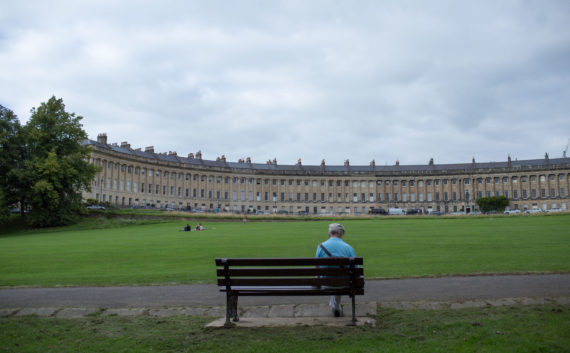
I’m not quite sure why Bath has alluded me for such a long time, it’s a town steeped in history with stories hidden around every street corner. I’m a big fan of traveling and learning about history so having the opportunity to wander around the Roman Baths was an experience I was really excited about. I was lucky enough to visit when the Roman Baths are open later in the evening, during the summer months visitors can explore the baths by torchlight.
Day 1 : Torchlit Visit to the Roman Baths
The Roman Baths were constructed way back in around 70 AD for bathing and socialising and today there’s a impressive amount of genuine building still remaining as well as much of the original Great Bath. It’s one of the best preserved Roman remains in the entire world and definitley a “must visit” on a trip to Bath
It was a strangely humid evening wandering around the square outside the Roman Baths and under the shadow Bath Abbey, peaking over the top of the Bath walls you can get a glimpse of a number of victorian statues on the terrace of the Great Bath. It gives you a little hint of what awaits within.
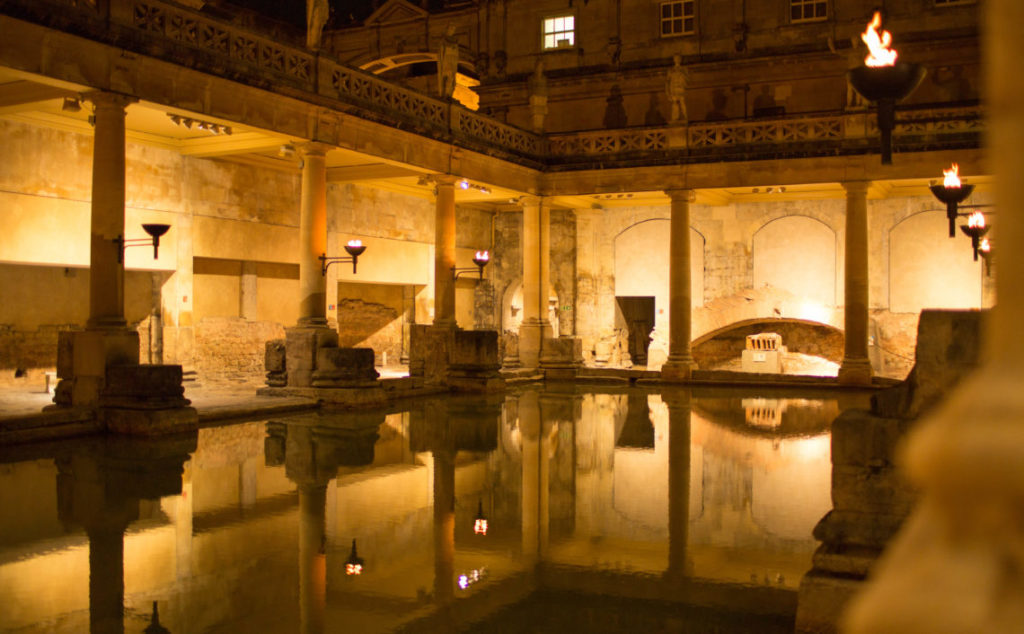
The Roman Baths are found alongside the historic Grade I listed Grand Pump Room and beneath today’s street level, the complex of rooms and baths are much larger than you’d imagine standing on the outside.
Armed with an audio guide I found myself strolling along the terrace looking down upon the Romain Baths, with flames from the torches beneath flicking. Overlooking the Great Bath it’s easy to imagine the romans bathing and socialising around the waters edge. Statues of Roman emperors including Julius Caesar and governors of Britain line the edge of the terrace over looking the baths, they date back to 1894 and were carved for the opening of the Roman Baths to the public back in 1897.
From the terrace the audio tour takes you on a winding path through various different rooms featuring museum displays and exhibits about the baths and life in roman times. The museum tells the story of Aquae Sulis, the roman town that became Bath and includes incredibly well preserved artefacts including the remains of what’s thought to be a Syrian trader that was found in Walcot, Bath and an impressive collection of roman coins. You can tell that there’s been a lot of planning put into the way exhibits, models and artefacts are woven into the story. It leads you down a path to understand the lives of those who lived in roman times and what role the Roman Baths played in people’s lives.
The Roman Baths had lay undiscovered for many years. In 1727 a life-sized head, the remains of a statue of the goddess Minerva was uncovered whilst sewer workers were digging. It wasn’t until 1755 when excavations were happening on the site that the baths were found when workers hit the lead flooring laid by the romans. Once cleared, the site unveiled the baths in surprisingly good condition as if they had been preserved for well over a thousand years. Even today the walls of the baths are still lined with the original lead installed by the romans themselves.
“…with flickering torches hung up on the six of the pillars surrounding the waters edge it’s easy to imagine the romans relaxing, bathing and catching up on the local gossip.”
After learning all about roman life and marvelling at the ancient artefacts on display in the museum I found myself at the centrepiece of the complex, the Great Bath. It’s definitely the highlight of a visit to the Roman Baths, with flickering torches hung up on the six of the pillars surrounding the waters edge it’s easy to imagine the romans relaxing, bathing and catching up on the local gossip. The complex even retains the dampness and smells that can transport you back to an era where the rooms were full of streaming hot saunas and ice cold pools. Even if your imagination doesn’t stretch that far there are actors dressed from roman times on hand to immerse you in the experience. There’s also the option of taking a guided tour around the baths every hour.
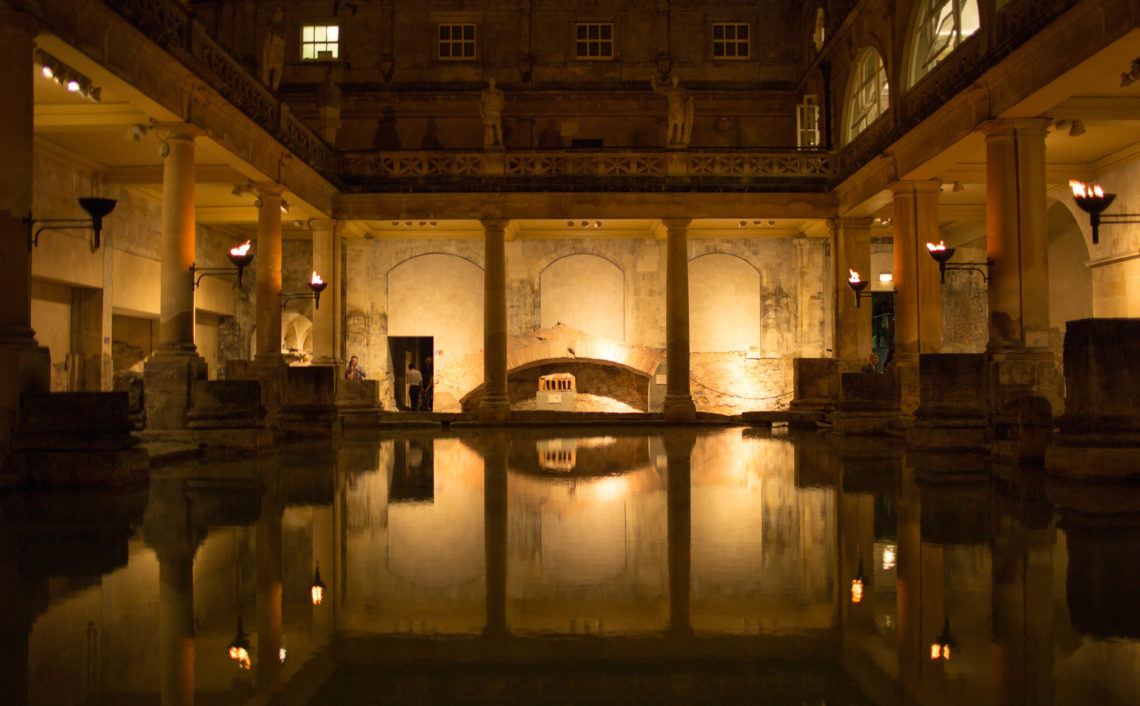
To the east of the Great Bath you have changing room, swimming pool and sauna areas that include useful displays and reconstructions depicting how the rooms were originally used, it really helps you to appreciate and understand the ruins. The west side of the Great Bath you’ll find a circular cold plunge pool that looks like a particularly chilly experience. The general idea for the romans was a practice of moving from different heated rooms and ending with the cold plunge pool.
What I did find at the Roman Baths is that you actually need a fair amount of time in order to take in all the whole experience. I’d definitely allocate at least one and a half hours if not two, so that you can take in the museum, explore the various different rooms and the Great bath itself.
By the time I’d finished exploring it was close to the 10pm closing time, but I just had time to finish off the tour with a cup of free spa water that apparently contains 43 different minerals. For some reason I was expecting a chilled cup of water but no, a warm cup of spa water is served up! Thankfully the spa water is safe and clean as a new bore-hole was sunk in 1983 to supply spa drinking water for the Pump Room.
There is little doubt that the Roman Baths are one of the most remarkable Roman ruins outside of Rome itself and are certainly up there with a visit to Hadrians wall if you’re traveling around England.
The Roman Baths Kitchen
Prior to visiting the Roman Baths, I was lucky enough to have a three course meal at the Roman Baths Kitchen directly opposite. They have a special menu for the torchlit tour of the baths that is definitely worth booking, the service is excellent, the food really exceeded expectations (especially the pan friend chicken breast) and its proximity to the Roman Baths means you only have to wander across the road before you’re at the entrance of the baths. You can either time your meal for before or after your tour of the Roman Baths, for me the dinner at the Roman Baths Kitchen was worth savouring.
Key Information
The Roman Baths are open until 10pm every July and August, but do allow at least one and a half hours for a visit (I’d say at least 2 hours).
Roman Baths Tickets
Tickets for the Roman Baths from September – December 2017 are £15.50 for adults (more ticket information here), The Roman Baths Torchlit Visit and Dinner Package is £42.50 per person (Senior / Student £40.75, Child £36.80).
Henrietta House
Whilst in Bath the lovely Henrietta House provided me with my room for the night. It’s a double fronted Georgian townhouse located just a short walk from the Roman Baths, Bath Abbey and the Pump Room. My double room had elegant decor that goes with the Georgian style of the terraced building and surrounding area. It’s situated in a great location and serves up a superb breakfast, I would definitely recommend the eggs Benedict!
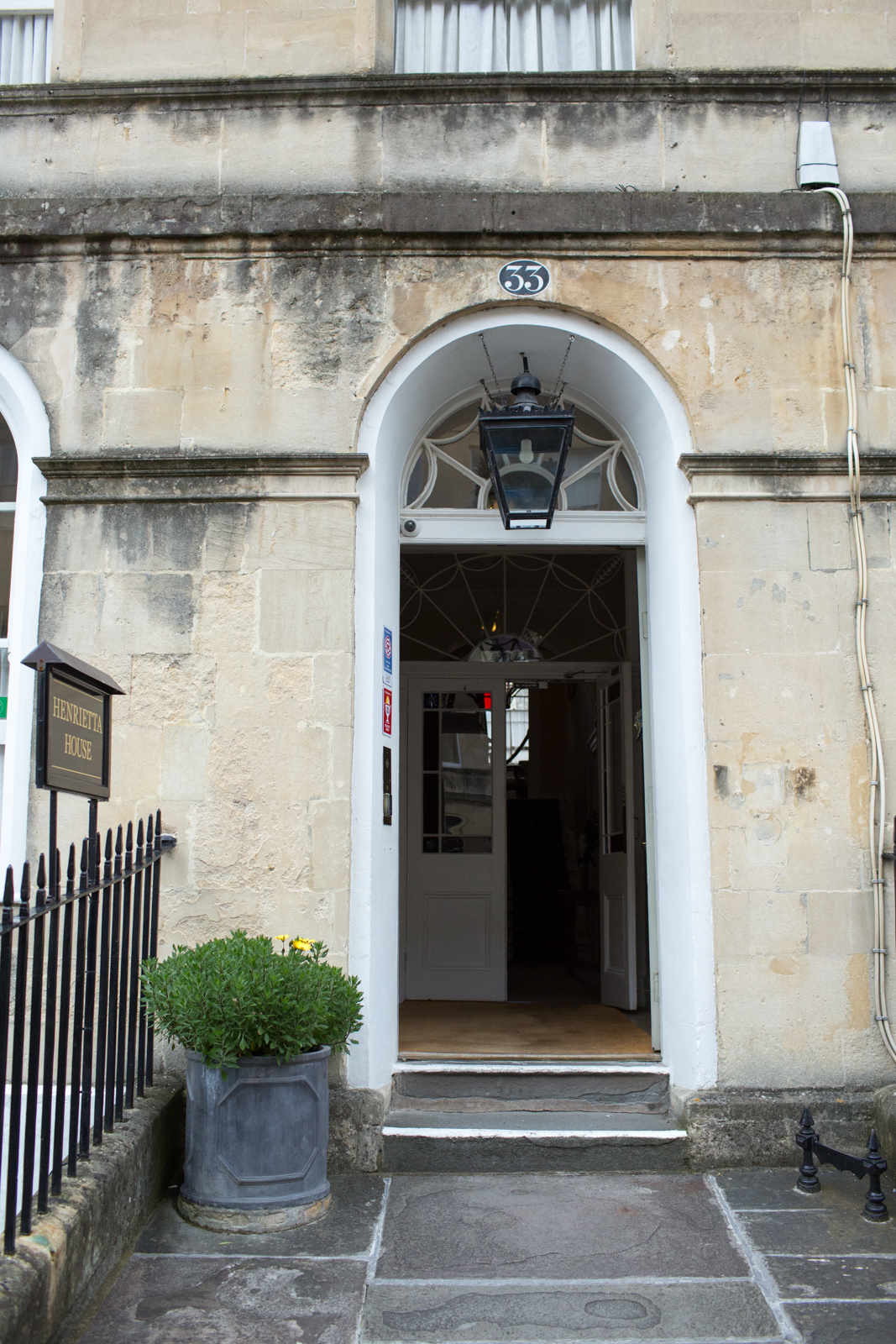
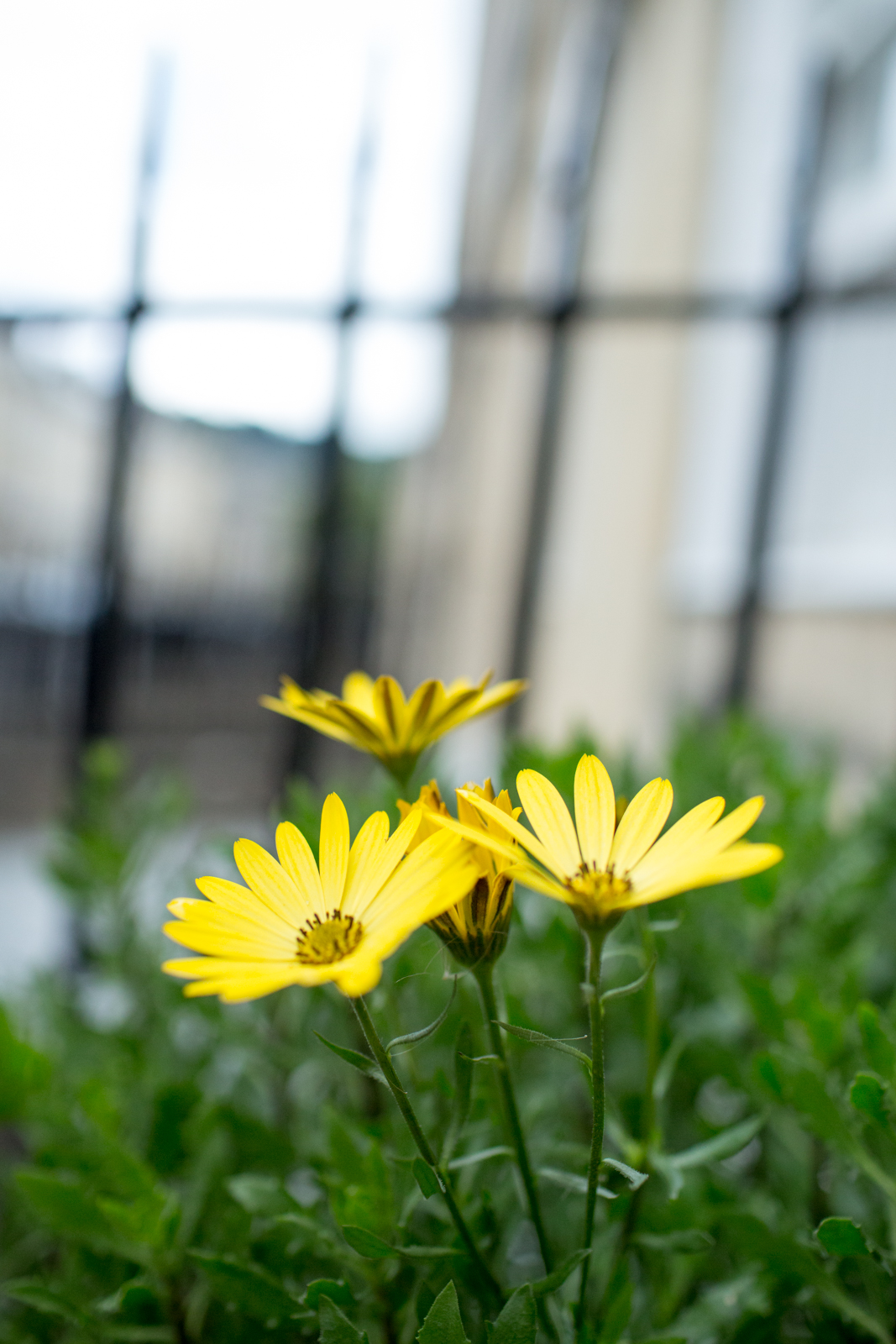
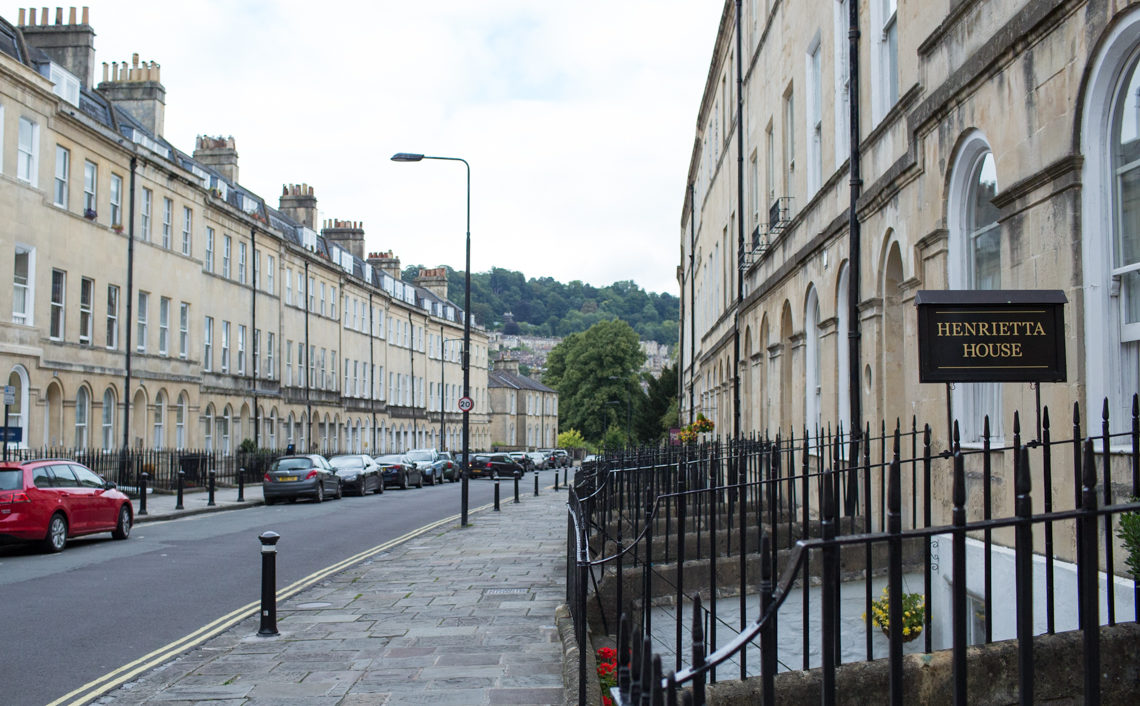
Car Rental
Hertz supplied me with my lovely red Renault to explore the south west of England. Hiring the car gave me plenty of freedom to get around the south west of England that I wouldn’t have been possible on a train.
Bath is around two hours and thirty minutes from London by car.
This post was brought to you as part of the #lovegreatbritain campaign, created and managed by iambassador in partnership with Visit Britain and Visit England. As always, TravMonkey retains all editorial control of what is published.

